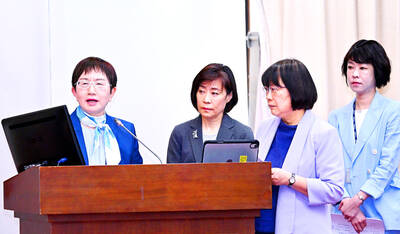JPMorgan Chase & Co on Friday announced that it is to open a new campus for financial technology, or “fintech,” in Silicon Valley in 2020, staffed by more than 1,000 workers.
The New York-based financial giant, the biggest US bank by assets, is to build the new campus in Palo Alto, California, which is also home to Stanford University.
It announced a location in the tech-rich city for a project that is expected to break ground next year.
“The addition of a first-class location is a key step for growing our presence in the [San Francisco] Bay Area,” Bill Wallace, head of digital, consumer and community banking at JPMorgan, said in a statement. “This is an important market for us and we’re looking forward to expanding our footprint and attracting more of the area’s top talent.”
The move came as banks such as Bank of America Corp and Wells Fargo & Co cut retail branches as more consumers shift to digital banking, particularly through mobile phones.
Last year, JPMorgan acquired WePay, a tech start-up that provides payment processing to software platforms. The company has also formed partnerships with fintech companies Bill.com and On Deck Capital Inc.
More than 275 WePay employees, along with chief executive officer and co-founder Bill Clerico, are to move to the Palo Alto campus, the statement said.
In August, JPMorgan announced a push into online investing, offering 100 free trades and low fees to attract more millennial customers.
JPMorgan chief executive officer Jamie Dimon has dismissed the bitcoin currency as a “fraud,” but touted other leading fintech pursuits as potentially transformative for global finance.
The new office is to feature “a modern workplace design and amenities that matter most to employees and state-of-the-art technology to increase collaboration,” the company said.

‘SWASTICAR’: Tesla CEO Elon Musk’s close association with Donald Trump has prompted opponents to brand him a ‘Nazi’ and resulted in a dramatic drop in sales Demonstrators descended on Tesla Inc dealerships across the US, and in Europe and Canada on Saturday to protest company chief Elon Musk, who has amassed extraordinary power as a top adviser to US President Donald Trump. Waving signs with messages such as “Musk is stealing our money” and “Reclaim our country,” the protests largely took place peacefully following fiery episodes of vandalism on Tesla vehicles, dealerships and other facilities in recent weeks that US officials have denounced as terrorism. Hundreds rallied on Saturday outside the Tesla dealership in Manhattan. Some blasted Musk, the world’s richest man, while others demanded the shuttering of his

ADVERSARIES: The new list includes 11 entities in China and one in Taiwan, which is a local branch of Chinese cloud computing firm Inspur Group The US added dozens of entities to a trade blacklist on Tuesday, the US Department of Commerce said, in part to disrupt Beijing’s artificial intelligence (AI) and advanced computing capabilities. The action affects 80 entities from countries including China, the United Arab Emirates and Iran, with the commerce department citing their “activities contrary to US national security and foreign policy.” Those added to the “entity list” are restricted from obtaining US items and technologies without government authorization. “We will not allow adversaries to exploit American technology to bolster their own militaries and threaten American lives,” US Secretary of Commerce Howard Lutnick said. The entities

Minister of Finance Chuang Tsui-yun (莊翠雲) yesterday told lawmakers that she “would not speculate,” but a “response plan” has been prepared in case Taiwan is targeted by US President Donald Trump’s reciprocal tariffs, which are to be announced on Wednesday next week. The Trump administration, including US Secretary of the Treasury Scott Bessent, has said that much of the proposed reciprocal tariffs would focus on the 15 countries that have the highest trade surpluses with the US. Bessent has referred to those countries as the “dirty 15,” but has not named them. Last year, Taiwan’s US$73.9 billion trade surplus with the US

Prices of gasoline and diesel products at domestic gas stations are to fall NT$0.2 and NT$0.1 per liter respectively this week, even though international crude oil prices rose last week, CPC Corp, Taiwan (台灣中油) and Formosa Petrochemical Corp (台塑石化) said yesterday. International crude oil prices continued rising last week, as the US Energy Information Administration reported a larger-than-expected drop in US commercial crude oil inventories, CPC said in a statement. Based on the company’s floating oil price formula, the cost of crude oil rose 2.38 percent last week from a week earlier, it said. News that US President Donald Trump plans a “secondary